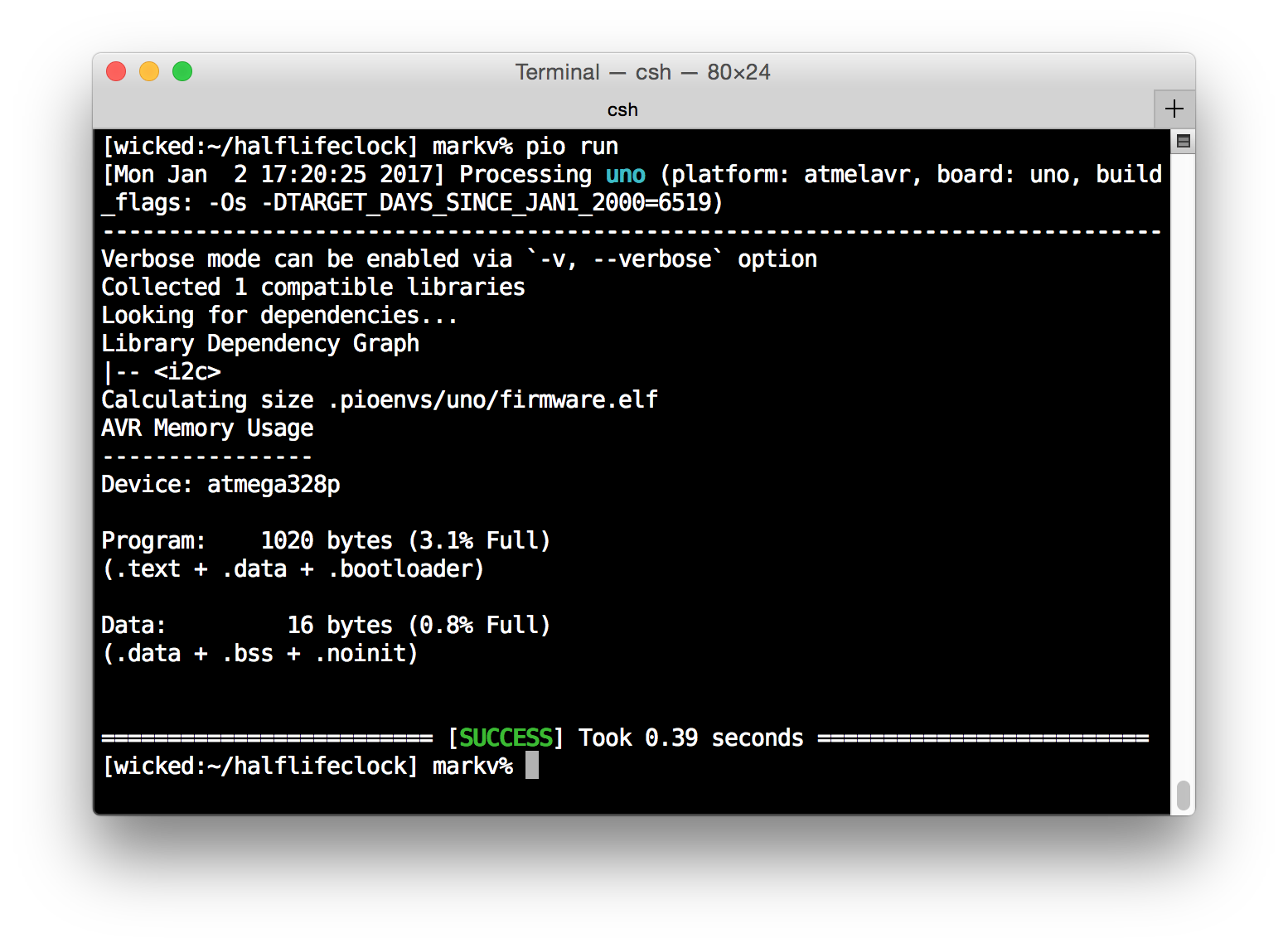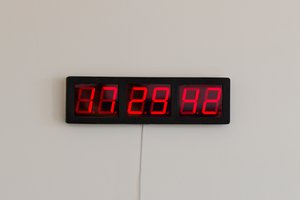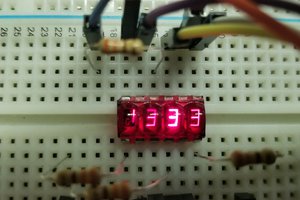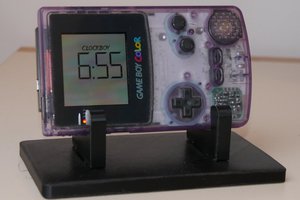I'm calling the project finished!
Compiling it in its final form resulted in a 1020 byte flash image:

And the code is available under an MIT style license from my github page. I was initially going to put it on a small Arduino micro, but I found a nice black box (part of the packaging for an Amazon Echo) so instead I just used that and kept it on the Metro that I was using for the prototype. I slit the side to accomodate the TM1640 display, secured it with a couple dabs of hot glue, and then piled the rest of the electronics inside. Despite the chaos of junk inside, it actually looks pretty nice, and will sit on my office desk for the better part of the next year. I did a simple video showing the final unit below:
 Mark VandeWettering
Mark VandeWettering

 Stephen Holdaway
Stephen Holdaway
 Jeremy g.
Jeremy g.
 JF
JF
 PixJuan
PixJuan
When the day comes? It has to come to life and climb out the window. Because Pixar!